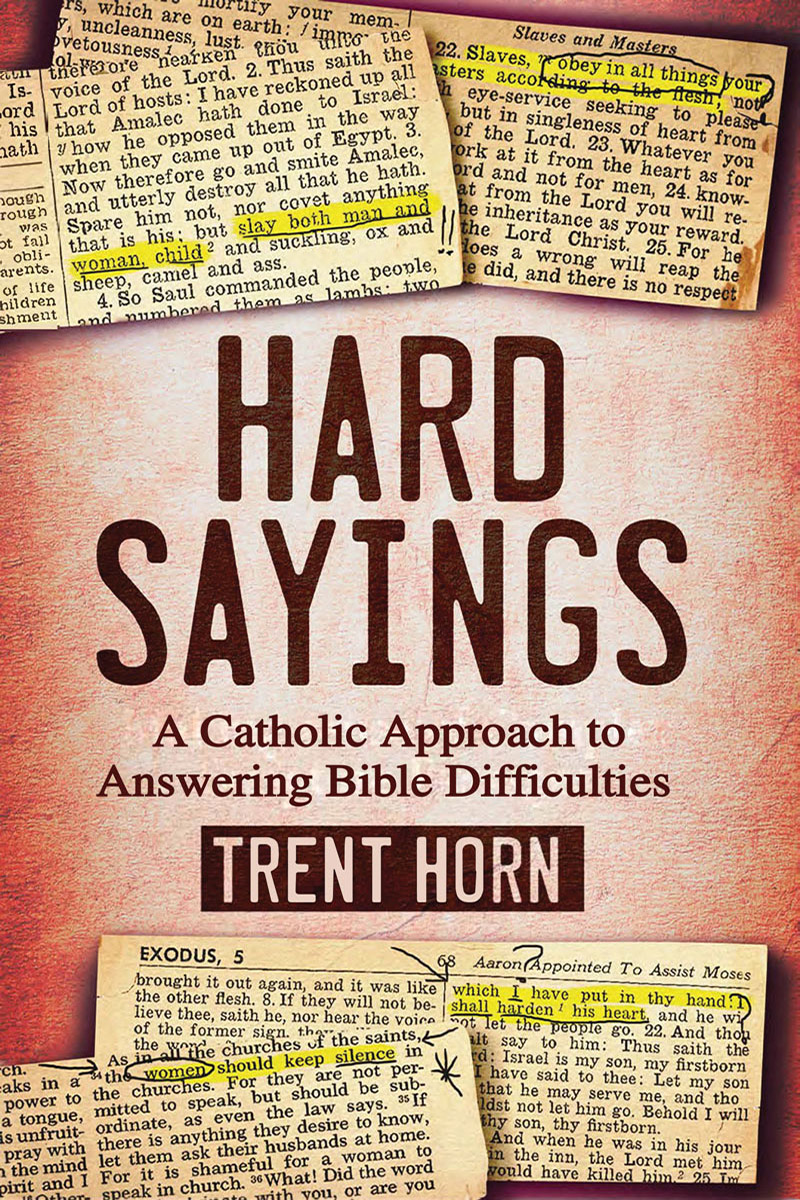Are Gospel Accounts Of The Nativity At Odds With Each Other?
 In this excerpt from his book, Hard Sayings: A Catholic Approach to Answering Bible Difficulties, Trent Horn looks at how we can make sense of what seem to be inconsistencies with the Gospel narratives around the the time of the Nativity.
In this excerpt from his book, Hard Sayings: A Catholic Approach to Answering Bible Difficulties, Trent Horn looks at how we can make sense of what seem to be inconsistencies with the Gospel narratives around the the time of the Nativity.
Consider the accounts of Jesus’ birth that are found in Matthew’s and Luke’s Gospels. According to critics, Matthew 2:1-23 tells us that Mary and Joseph lived in Bethlehem, where Mary gave birth to Jesus and the couple received the Magi. Later, the family fled to Egypt, and after Herod’s death they returned to Judea and settled in Nazareth. But according to Luke 2:1-7, Joseph and Mary already lived in Nazareth. They went to Bethlehem to enroll in a census, whereupon Jesus was born in a manger. The family later returned to Nazareth without traveling to Egypt.
Are these accounts at odds with one another?
They would be if they purported to be an exhaustive description of everything the Holy Family did. But just because some details are omitted from either Matthew’s or Luke’s account does not mean that the accounts aren’t accurate in what they do describe. This objection also assumes that the events in Matthew’s Gospel take place immediately after Jesus was born. But Matthew 2:1 says, “[W]hen Jesus was born in Bethlehem of Judea in the days of Herod the king, behold, wise men from the East came to Jerusalem.” In other words, Matthew never says that the Magi were present at Jesus’ birth. He only says that “in the days of Herod the king” the Magi came to Jerusalem, not Bethlehem.
Also, after the Magi failed to return to Herod after visiting Jesus, Herod ordered all of Bethlehem’s male children under the age of two to be killed. If the Magi had gone only six miles from Jerusalem to visit the newborn Jesus in Bethlehem and failed to return after a few days, then why would Herod need to kill toddlers? This implies that much more time had passed between Jesus’ birth and the Magi failing to return to Herod, thus motivating Herod’s plan to kill any child that could be the young king, who, by the issuance of this decree, might have been two years old.
This additional period of time allows us to construct a timeline that makes sense of both accounts.
1.Joseph and Mary live as a betrothed couple in Nazareth when the angel Gabriel visits Mary (Luke 1:26-38).
2.The Holy Family travels to Bethlehem, where Mary gives birth to Jesus (Luke 2:1-20).
3.Jesus is circumcised (Luke 2:21) and then presented in the Jerusalem temple (Luke 2:22-38).
4.Luke tells us that the Holy Family returns to Nazareth after this (Luke 2:39), not, as Matthew says, after the flight to Egypt and the death of Herod (Matt 2:19-23). This is the most contested difference between the narratives , but there are two options that explain it. One the one hand, Luke may be “compressing” his narrative and only describing the final return to Nazareth. He would then be omitting the other events surrounding the Holy family’s return there (including a temporary residence in Bethlehem after Jesus’ birth). On the other hand, Luke could be describing an immediate return to Nazareth after the presentation that did not preclude a later, temporary trip to Bethlehem. Luke 2:41 even says that Jesus’ parents made a pilgrimage every year to Jerusalem, so they may have stayed in Bethlehem with extended family during those visits to Jerusalem.
5.Sometime after the birth of Jesus, possibly as long as two years later, the Magi visit Herod and the Holy Family (Matt. 2:1-12). The Holy Family were either permanently residing in Bethlehem after Christ’s birth or they were temporarily residing there while they were away from their home in Nazareth when they receive the Magi.
6.The Magi leave and do not report back to Herod, which motivates the king to slaughter the young male children of Bethlehem in order to ensure the child’s destruction. Fortunately, Joseph is warned in a dream to flee to Egypt in order to avoid the massacre (Matt. 2:13-18). This comports with ancient evidence of a large Jewish population living in northern Egypt during this time.
7.Joseph returns from Egypt after the death of Herod the Great and chooses to live in Nazareth rather than Bethlehem, in order to avoid Herod’s brother Archelaus (Matt. 2:19-23). Since Matthew did not describe the initial journey to Bethlehem, he informs the reader about Joseph’s decision to move to “a city called Nazareth.” This does not mean that Joseph had never lived in Nazareth. It only means that the readers of Matthew’s Gospel might have been unfamiliar with the city and needed it explained.
If you enjoyed this excerpt, and want to find out more, order your copy of Hard Sayings: A Catholic Approach to Answering Bible Difficulties today!
Recent Posts
-
If We Just Love Jesus, Does It Really Matter Which Church We Go To?
When I was considering joining the Catholic Church, I sat down with some of my non-Catholic friends …Dec 12th 2025 -
How Can I Prepare Myself to Receive Holy Communion at Mass More Fruitfully?
Preparation for the celebration of the holy Mass and reception of Holy Communion is an essential el …Dec 8th 2025 -
Why Does the Church Celebrate "Seasons"?
Liturgical seasons are days and weeks set aside on the Church calendar for ongoing celebration of e …Dec 1st 2025









